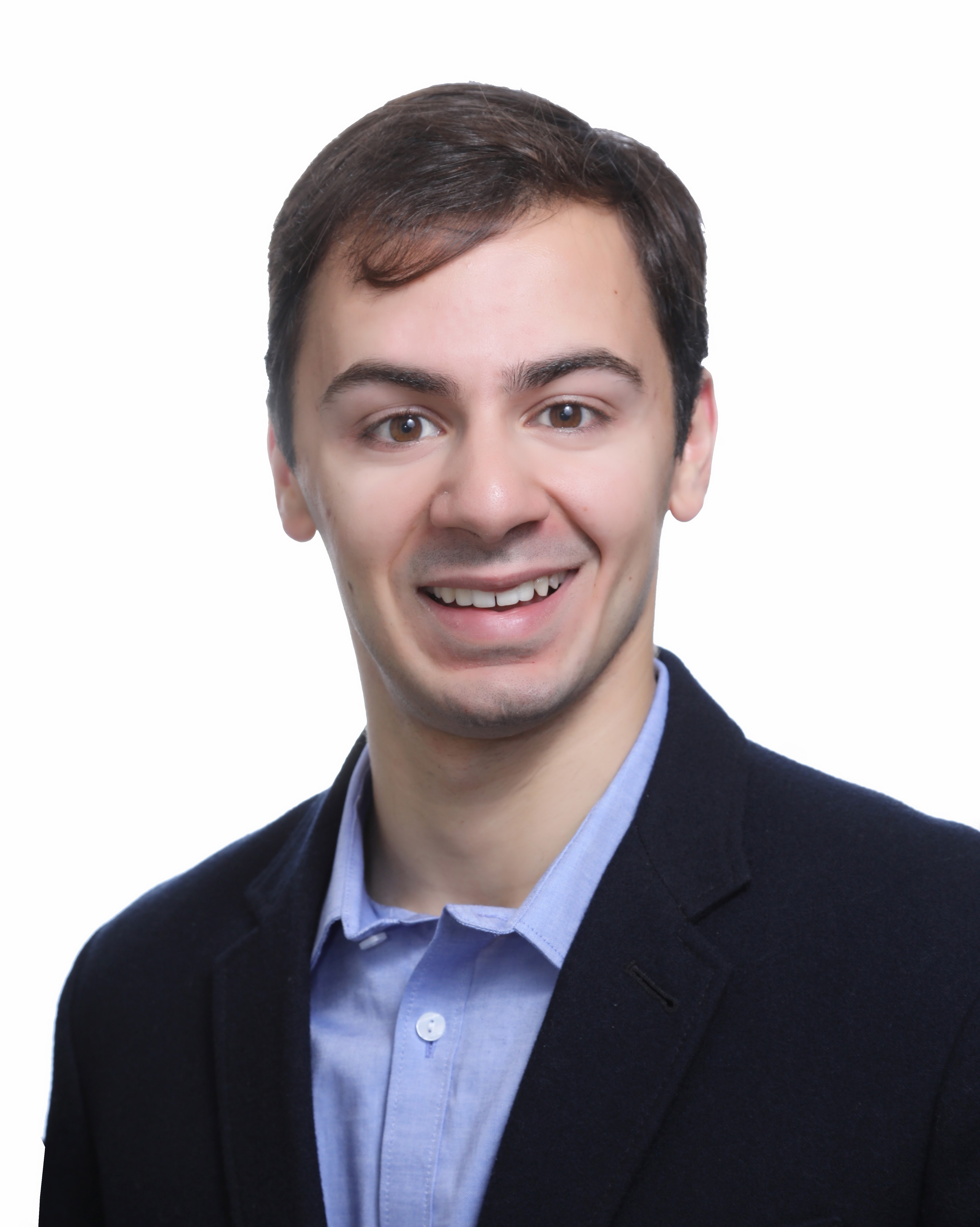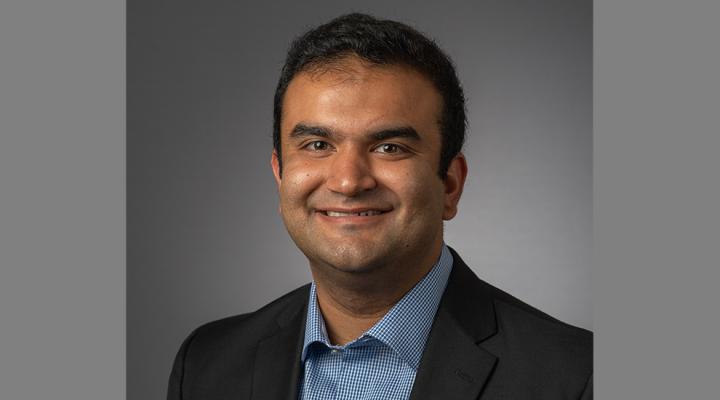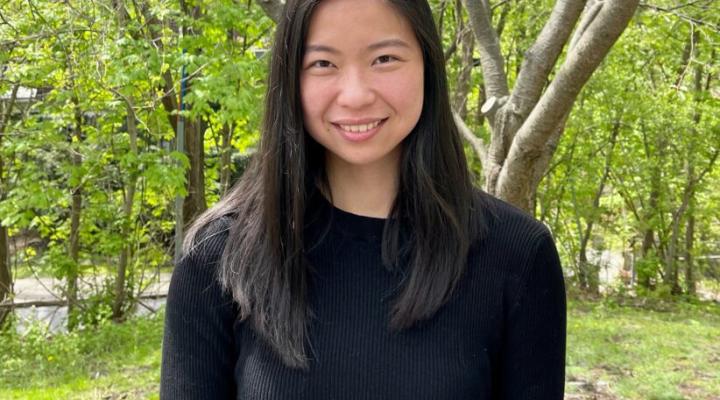The capabilities of future electronic devices are limited less by the human imagination than by the materials available to make them. Materials Science and Engineering Ph.D. student Joe Casamento is working to make sure our materials keep up with our imaginations.
 Casamento is a member of the Jena-Xing Lab, whose broad focus is to develop electronics grade semiconductors and understand the fundamental limits of these materials and their applications. Casamento, in the final year of his doctoral studies, has worked most closely with the lab’s nitride semiconductor platform with the goal of enhancing its functionality. “Specifically, I have tried to create emergent electronics properties and phenomena, and to improve desired electronic phenomena for certain applications,” Casamento said.
Casamento is a member of the Jena-Xing Lab, whose broad focus is to develop electronics grade semiconductors and understand the fundamental limits of these materials and their applications. Casamento, in the final year of his doctoral studies, has worked most closely with the lab’s nitride semiconductor platform with the goal of enhancing its functionality. “Specifically, I have tried to create emergent electronics properties and phenomena, and to improve desired electronic phenomena for certain applications,” Casamento said.
Gallium nitride (GaN) has been used in LEDs, lasers, transistors, power control integrated circuits, and radar systems for several years. When other elements are added to GaN’s crystal lattice structure the resultant materials often exhibit new or altered properties. Researchers are excited about the promise of GaN-based electronics because of the potential huge decrease in energy consumption compared to electronics made from currently available materials, like silicon.
Casamento has been using thin film deposition techniques to add scandium and other transition elements to GaN and to another promising material, aluminum nitride (AlN). One of his more significant findings is that the purity of the scandium used has a big impact on the resulting electronic properties and conductivity of the final material. This is an essential piece of information if any of these new materials will ever be mass-produced for widespread use.
Other key findings are that when scandium is added to aluminum nitride, many interesting and potentially useful phenomena result. The new material, scandium aluminum nitride, has an increased ability to turn electrical voltage into a mechanical strain, has increased dielectric permittivity—meaning an increased ability to hold an electric charge, and it exhibits ferroelectric behavior, which would make this material an excellent choice for integration into more energy efficient electronic devices. These exciting phenomena have led to interest and funding from industry and government agencies, including the Defense Advanced Research Projects Agency (DARPA).
Casamento is a first-generation college graduate who, as a high school sophomore, went to an engineering-themed career day near his hometown in Union County, NJ. “At around that same time,” Casamento said, “I actually googled ‘What does an engineer do?’ and the answer that stuck out to me was ‘Engineers apply mathematics and scientific principles to solve society’s problems.’ That sounded both promising and exciting and it put me on the path to where I am now.”
He went to the University of Michigan and majored in materials science. “For me, the biggest thing was materials science allows you to apply chemistry and physics principles at the most fundamental level to create new materials,” Casamento said. “And that has always seemed like the bottleneck of innovation—devices and systems can only do what the materials allow them to do.”
While at Michigan he had several research and internship opportunities, which gave him the chance to explore various aspects of materials science as a career. During his first internship, with Materion Corporation, Casamento was mentored by scientists who had doctorates. “I was able to see the difference between their roles and responsibilities and those of someone with a bachelor’s.” Casamento said. “The people with the Ph.D.s did the long-term thinking and strategic planning and their expertise was impressive. That is when I first started thinking about pursuing materials science beyond just my undergraduate degree.”
Casamento decided to come to Cornell for many reasons. One was the idea of “any person, any study.” It resonated with Casamento. Another was Cornell’s strength in thin films materials science. The ease of collaboration with researchers from other schools and departments was also very attractive to Casamento, as was the university’s deep strength in both fabrication and characterization. The clincher was his visit to campus when trying to decide where to get his doctorate.
“During that visit I got to talk with all of the professors who would later be on my committee,” Casamento said. “I met with Debdeep Jena, with Grace Xing, and with Darrell Schlom. And I came away knowing Cornell would be a good place for me.”
Six years later, Casamento is nearing his graduation day and excited about whatever comes next. He is applying for postdoctoral research positions and tenure track faculty positions. “Professor Jena gave me the flexibility to pursue what I what I wanted to pursue and I am so grateful to him for that,” Casamento said. “My ultimate goal is to one day have a lab where I can give someone else that same flexibility to study what they want to study.”
When Casamento steps away from the molecular beam epitaxy vacuum chamber and the atomic force microscope in Duffield Hall, he likes to play basketball and volleyball. He also enjoys being outside and taking advantage of upstate New York’s natural beauty. He has been everywhere from Niagara Falls to the Adirondacks in his six years at Ithaca and says he will miss New York very much if his career takes him elsewhere.





